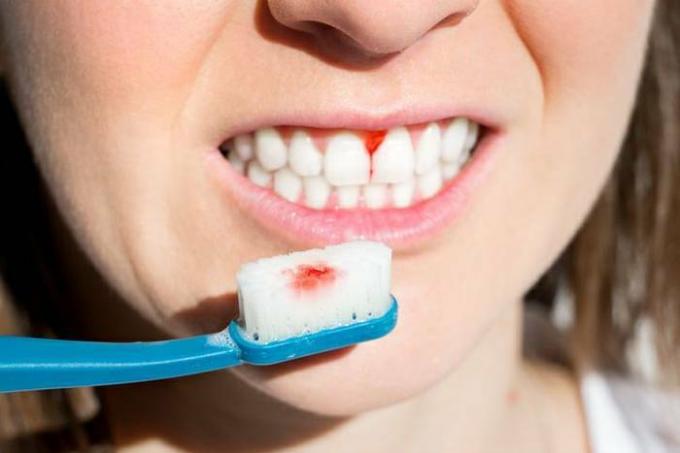Has a stone appeared on your teeth? Remove it urgently. After all, stone "deposits" in the mouth can provoke serious health problems. For example, hitting the heart and causing stomach problems
What is tartar?
This is hardened limescale deposits on the surface. teeththat can cover part of the crown and root. If calculus is visible above the gingival margin and is white or whitish-yellow, then the calculus is supragingival. The subgingival is less fortunate - it forms in the gingival or periodontal pockets and you just can't see it - only with the help of the dentist's equipment. A stone can form for many reasons: if a person brushes their teeth irregularly or improperly, uses low-quality brushes and pastes if he likes soft food or chews on one side only jaw. Other options are impaired metabolism and too thick saliva. Note that dental calculus can also appear on dentures if they are poorly looked after.

It is especially important to brush your teeth in the evening before bed / istockphoto.com
Prevention of dental calculus
Actually, it is simple - just try to protect yourself from everything written above and finally understand that you need to go to the dentist at least once a year in the first place.
“Eat flour and sweets less. Avoid soft foods during snacks - their remnants stick well to the teeth and linger on them. Eat something solid - raw vegetables or fruits. And, of course, do not forget to brush your teeth, especially at night. After all, if in the morning plaque can go away along with eating a piece of hard cheese, a crust of bread or the same apple, then at the end of the day only a toothbrush can remove it, ”- explains Svetlana Vergeles.
4 ways to deal with tartar
With proper oral hygiene, carry out a professional brushing teeth once a year is enough, and if you know that not everything is perfect with hygiene - every six months.
You can remove the hated stone in different ways:
- Mechanical (manual) method: The stone is scraped off with special hooks. True, today such cleaning is rarely resorted to, since it is easy to damage the enamel. Mechanical cleaning also includes the so-called Air Flow method - a system for supplying a strong stream of air, water and soda to the surface to be treated. This method is most often used to polish tooth enamel. ■
2. Chemical method: deposits are removed with the help of potent substances (acids, alkalis). A special solution is applied to the places of formation of the calculus, which after some time is removed with water - the softened tartar is easily washed off. Contraindications - thin tooth enamel or hypersensitivity to the substances used. ■
3. Physical way: the stone is removed with ultrasound. An additional bonus - after the hardware exposure, the enamel is brightened. But there are also contraindications: some cardiovascular diseases or a pacemaker installed in the body.
4. Laser cleaning. The advantage is that during cleaning, you can control and change the strength of the laser action on different areas. In addition, the laser also has bactericidal properties.
"After removing the tartar, the surface is ground and polished with special pastes - after that, a new plaque is formed more slowly,"- explains Vadim Novikov.

It is especially important to brush your teeth in the evening before bed / istockphoto.com
What will happen if the tartar is not removed
Tartar affects both hard and soft tissues. Plaque, provoking an inflammatory process in the adjacent gingival areas, leads primarily to caries and gum disease - gingivitis develops, inflamed gums can bleed even with mild touch. Gradually, the stone grows and deepens further and further under the gum. When the surface of the root is covered with limescale, the fibers of the supporting apparatus of the tooth begin to die off.
The jaw bone becomes non-functional in these places and is easily destroyed - they are formed pathological periodontal pockets, after which periodontitis develops (a situation when all tissues are damaged, surrounding the tooth). It can progress and take on more complex forms.

Bleeding gums - one of the unpleasant consequences of tartar / istockphoto.com
Few people know what happens if you don't get rid of tartar in time. Prolonged inflammatory processes in the oral cavity, which occur due to dental plaque with billions of pathogenic bacteria teeming in them, can become the main cause of the formation of frequent diseases of the upper respiratory tract, infections of the gastrointestinal tract, various diseases blood. The result of the development of gingivitis and periodontitis can be a general damage to internal organs, heart valves, female and male reproductive systems.
You will also be interested to read:
Why teeth turn yellow: TOP-3 reasons
Teaching your child to brush their teeth: 5 ways that work

